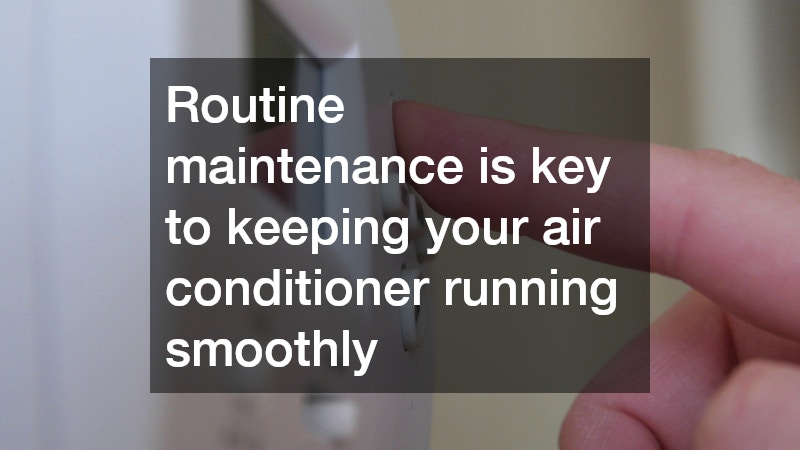Air conditioning systems have become essential fixtures in many homes and workplaces, providing comfort and relief from harsh weather conditions. However, like any mechanical system, air conditioners require regular maintenance and occasional repairs to operate efficiently. Many people view AC repairs as a frustrating inconvenience, but learning to appreciate the process can transform how you manage your comfort system. Understanding the workings of your air conditioner and the steps involved in repairs not only empowers you but also helps you extend the lifespan of your unit.
Embracing AC repairs with a positive mindset can save money, reduce stress, and ensure your environment remains cool and comfortable throughout the year.
Moreover, developing a relationship with the maintenance and repair process fosters a proactive approach to home care. Rather than waiting for an unexpected breakdown, you become better equipped to identify early warning signs and take action. This preparedness can prevent costly damage and improve the overall efficiency of your AC unit. Learning to love AC repairs means recognizing their value in preserving your investment and enhancing your daily comfort. Through knowledge, regular upkeep, and confidence in troubleshooting, you can turn what was once a chore into an opportunity for empowerment and satisfaction.
Understanding the Basics of AC Repairs
An air conditioner is a complex machine designed to regulate temperature and humidity by transferring heat from inside a building to the outside. It relies on several key components, such as the compressor, condenser, evaporator coil, and refrigerant, to cool the air efficiently. Knowing these parts and their functions can demystify the repair process and make troubleshooting less intimidating. AC repairs typically diagnose which component has malfunctioned and then address that specific issue to restore proper operation.
Specifically, the repair process often starts with checking the thermostat settings and electrical connections to ensure they function correctly. Technicians or knowledgeable homeowners will inspect the refrigerant levels, as leaks or low refrigerant can cause the system to struggle or fail. Identifying problems such as a clogged filter, damaged fan motor, or faulty compressor requires careful examination and sometimes specialized tools. Understanding these basic mechanics allows you to follow the repair steps with greater confidence and make informed decisions about when to attempt fixes yourself or call in professional help.
Common AC Issues and How to Spot Them
Air conditioners can encounter various issues over time, some of which are easy to detect without technical expertise. Common problems include insufficient cooling, strange noises, water leaks, and unusual odors coming from the unit. Recognizing these symptoms early is crucial, as delaying repairs can worsen the damage and increase costs. Becoming familiar with the typical signs of trouble helps you act quickly to maintain comfort and prevent more serious breakdowns.
For example, if your AC blows warm air instead of cool, this might indicate a refrigerant leak or compressor failure. Strange noises like grinding or rattling could signal loose or worn-out parts, while water pooling around the unit may suggest a clogged drainage line. An unpleasant smell often means mold growth or electrical issues within the system. By paying attention to these specific indicators, you can perform simple checks or contact a technician before minor problems escalate into complete system failures.
Tips for Maintaining Your Air Conditioner
Routine maintenance is key to keeping your air conditioner running smoothly and reducing the need for emergency repairs. Simple tasks such as regularly replacing air filters, cleaning coils, and checking refrigerant levels can significantly improve system efficiency. Establishing a maintenance schedule helps maintain air quality, extend the life of your AC unit, and save energy costs.
More specifically, you should replace or clean the air filter every one to three months, depending on usage and environmental factors like dust or pet hair. Keeping the condenser coils clean by gently brushing off dirt and debris allows better heat exchange, which enhances cooling performance. Checking refrigerant levels annually and inspecting electrical components for wear or corrosion ensures the system operates safely and reliably. Combined with professional tune-ups once or twice a year, these practical steps can prevent everyday repair needs and foster a more comfortable living space.
Learning to love AC repairs begins with understanding that these efforts protect your comfort and investment over time. Viewing repairs as opportunities for learning and empowerment changes the narrative from frustration to proactive care. By gaining knowledge about how your air conditioner works, recognizing common problems, and maintaining your system regularly, you develop the skills and confidence to manage repairs effectively. Whether you perform simple fixes yourself or collaborate with professionals, embracing this process leads to a more comfortable home and greater peace of mind.
In the end, fostering a positive attitude toward AC repairs transforms them from a dreaded chore into an essential part of responsible homeownership. This mindset helps you avoid costly emergencies and improves your ability to enjoy cool, clean air throughout the seasons. With patience, practice, and the right resources, anyone can learn to appreciate the value of caring for their air conditioning system and, ultimately, love keeping it running smoothly.






